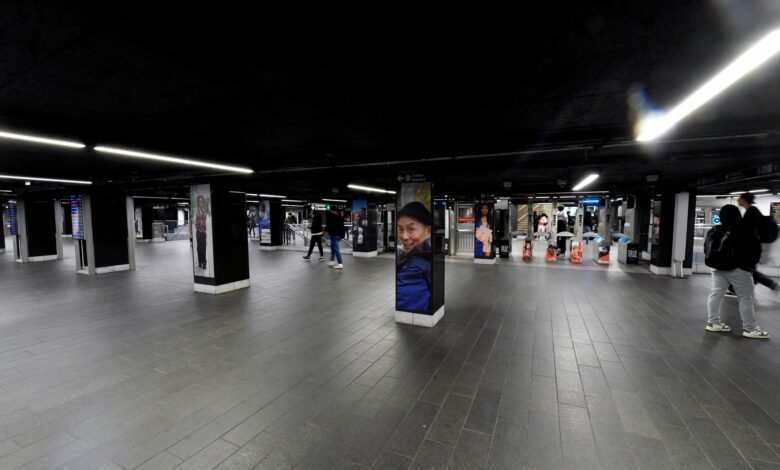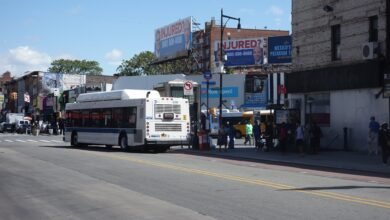

After five years of work, the MTA has completed its long-awaited rehabilitation of three subway stations beneath 42nd Street in Midtown. The MTA on Tuesday announced the completion of the Grand Central–42nd Street Circulation Improvement Project, an effort that upgraded the Times Square, Bryant Park, and Grand Central subway stations to improve accessibility and ease congestion for roughly 400,000 daily riders. Enhancements include new and widened staircases, additional escalators, and a 20 percent expansion of mezzanine floor space.

The project began in 2020 and, according to the MTA, was completed on time and $46.5 million under budget. It was partially funded by the Federal Transit Administration, which contributed $94.1 million to replace eight escalators and $8.7 million to install a new hydraulic elevator at the Grand Central–42nd Street station.
Cost savings came from using a design-build contract, which streamlines logistics and creates a single point of accountability, deploying in-house labor, “piggybacking,” or assigning crews to multiple projects during service outages, and consolidating three separate initiatives into one.
New features at the station complex include 14 newly built staircases, 24 widened staircases, and 10 replaced escalators. The MTA also installed one new elevator from street to mezzanine, replaced another, and upgraded three elevators connecting the mezzanine to the uptown and downtown Lexington Avenue 4, 5, and 6 lines, as well as the Flushing 7 line platforms.
Crews also installed new fare control areas with 30 additional turnstiles, bringing the total to 92—nearly 50 percent more than five years ago. The MTA said the upgrades will improve passenger circulation, reduce congestion, and enhance accessibility by providing faster, easier entry to the subway system and commuter trains within Grand Central Terminal.

The larger project also included state-of-good-repair work under the MTA’s “Revive” program and upgrades to fire and security systems. Improvements encompassed 266,000 square feet of new paint, 436 square feet of new tiling and concrete, the conversion of 1,377 lightbulbs to brighter, energy-efficient LEDs, structural repairs, and fresh grouting to prevent water leaks.
Upgrades to the fire system included 214 new smoke detectors and 470 fire alarms. The MTA also installed 61 additional CCTV cameras, a nearly 50 percent increase since 2020, along with new wayfinding signs and 143 public address speakers to improve safety and communication.
As part of the project, a new underground passageway connecting Grand Central Terminal to the 7 line platform opened in February. Crews also constructed a new staircase to the Flushing Line 7 platform and widened existing staircases by 25 percent to improve circulation between the Lexington Avenue and Flushing Line passageways.
Work on the tunnel began in 2024, when crews descended a 55-foot shaft, excavated thousands of tons of soil, and conducted controlled blasts through bedrock to build the new connection beneath 42nd Street.
The MTA Arts & Design program also commissioned two new artworks and modified three existing pieces, enhancing wayfinding and beautifying the transit hub. Jim Hodges’s “Love,” installed in 2020, is located at the landing and mezzanine level of the stairs and escalators connecting Grand Central Terminal with the subway station’s 42nd Street entrance.
The following year, Jackie Ferrara’s “Grand Central: Arches, Towers, Pyramids” was expanded to wrap around new mezzanine staircases and extend across the full six-car length of the 42nd Street Shuttle platform. In 2024, Christopher Sproat’s V-Beam—a suspended light sculpture above the 7 line platform—was cleaned, re-lit, and retrofitted to integrate with the new stairways.
Additionally, earlier this year, a 600-square-foot glass mosaic by Hilma’s Ghost was unveiled at the 42nd Street and Third Avenue entrance leading directly to the 7 train. Titled “Abstract Futures,” the artwork explores themes of “portals” and “journeys,” serving as a metaphor for the spiritual transformations many experience while navigating life in the five boroughs.
The project caused congestion along platforms and walkways as construction progressed. According to MTA Chair and CEO Janno Lieber, consolidating multiple efforts into a single project was intended to minimize disruption.
“We heard from lots and lots of riders that they were burned with so much blue plywood up, they had no sense of the schedule,” Lieber said, as reported by Gothamist. “The project seemed to stop and start in a discoordinated manner. We brought them all together under a single management operation with a couple of great contractors, we took advantage.”
RELATED:
Source link




